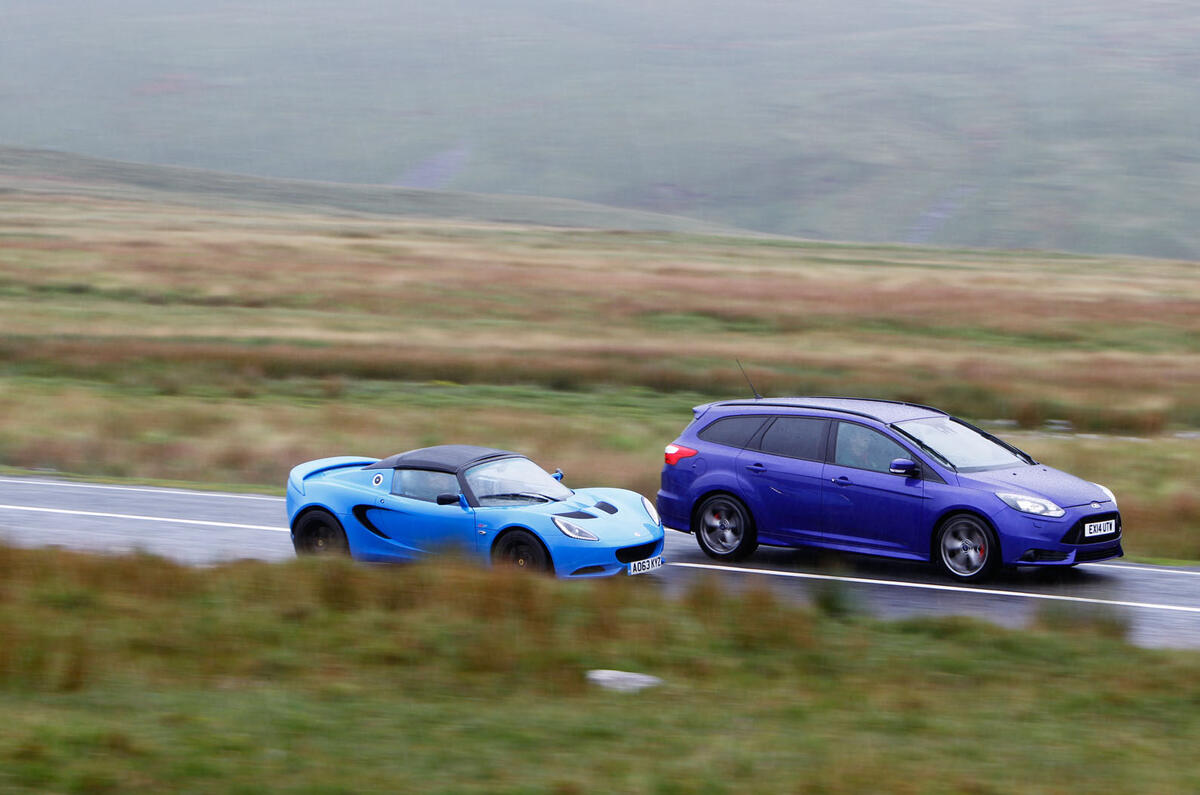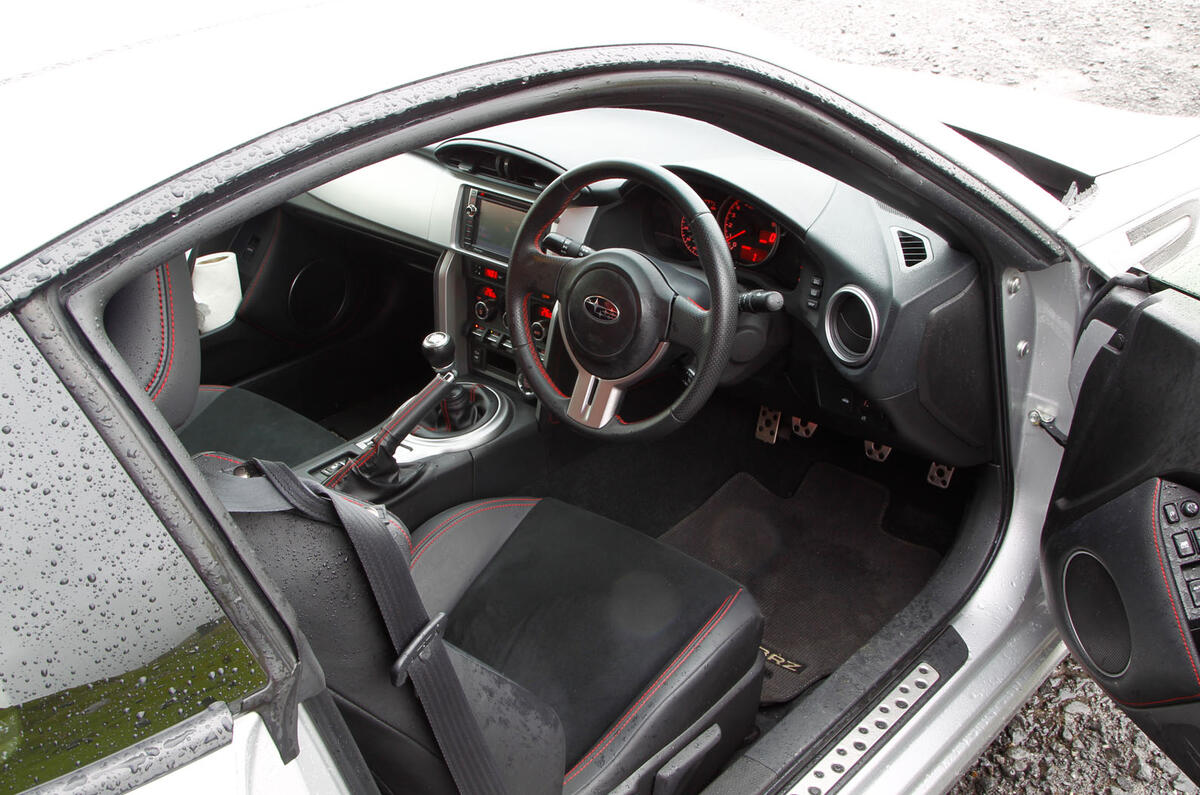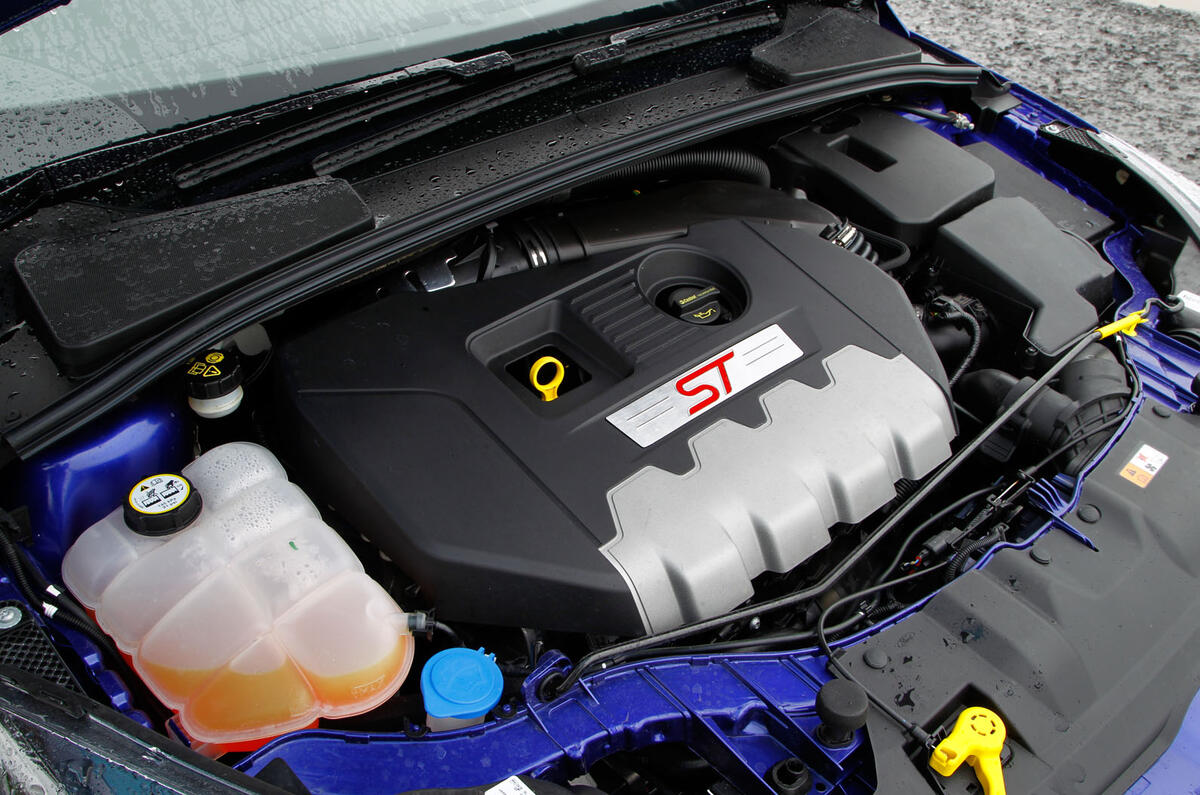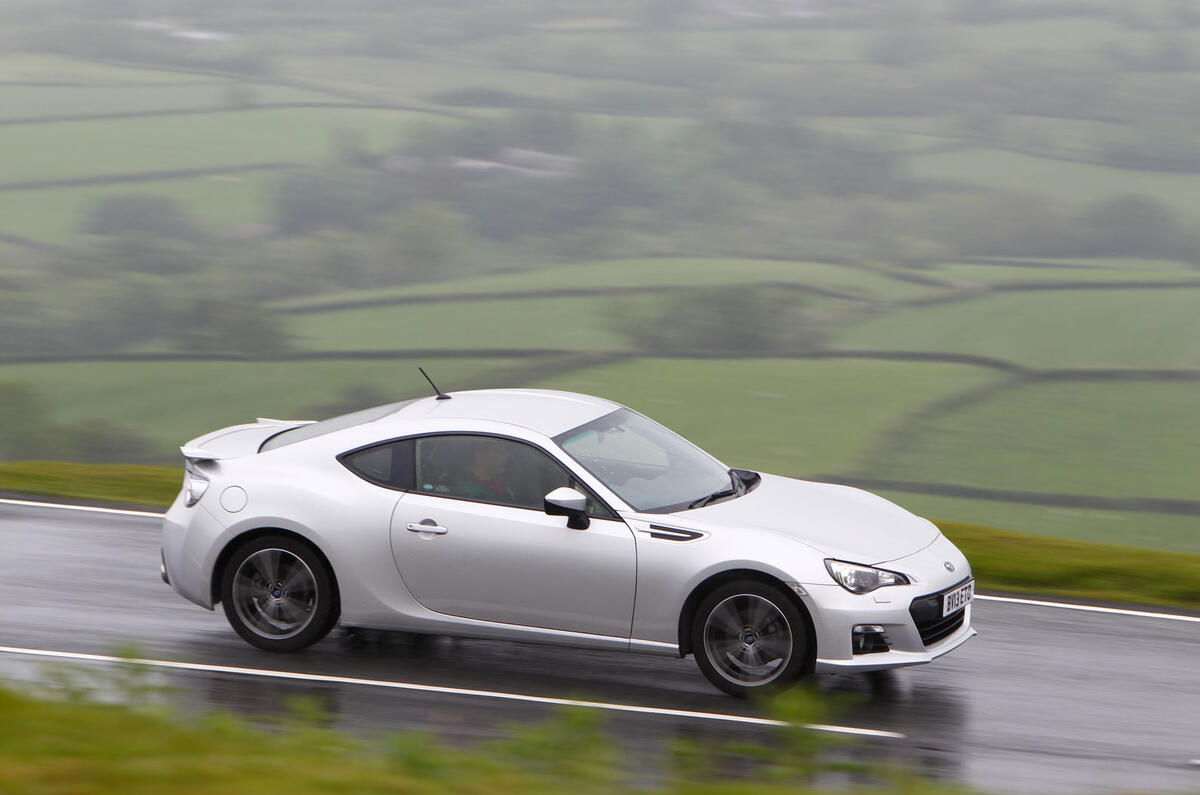We all have our own definition of enjoyment. Some like horror films, roller coasters or chasing Double Gloucester cheese down steep hills. Others incline towards chess, Proust and triple-checking the proof of Fermat’s Last Theorem.
Behind the wheel, however, there is perhaps greater consensus. It’s hopefully not too controversial to say that, as enthusiasts all, our pleasure derived from driving a car comes from its performance, the manner in which this is delivered, the tactility of the steering, the grip of the tyres and the confidence these factors combine to deliver.
Except that’s really only half the picture. What if one car provides the ride of your life, but only in perfect conditions and on roads nowhere near where you or the vast majority of the rest of the country lives? What if it’s purgatory to drive it to anywhere you’d actually choose to use it? How should that compare to a car that’s perhaps less entertaining, but commensurately more usable?
Surely, the amount of fun a car has to offer has to be expressed as the driving satisfaction it provides multiplied by the number of times you are able or feel inclined to use it. There is, in short, a formula for fun.
So we thought we’d get some cars together, wildly diverse in character and purpose, but united in the provision of driving pleasure and loosely grouped around the £30,000 price mark.
Our intention was simply to find which delivered the best balance between functionality and fun. Is a car you’d only choose to drive in an ideal geographical and climatic environment a pointless indulgence, or does the joy it offers simply transcend all other considerations?
Likewise can a car primarily intended to transport families and their luggage ever provide enough pure driving excitement to be considered in such company? Or is the most convincing formula for fun somewhere between these poles?
One more thing before we start. Unlike most group tests, where a precise order of ability is sought, this is clearly not relevant here. If we didn’t already like and respect these cars, they’d never have been chosen to take part. To that extent they’re all winners. But, as we shall see, that in no way precludes one of them from being the most convincing of all.
Our most sensible competitor, at least on paper, is the Ford Focus ST-3 estate, keenly priced at £26,595 and known not only for being able to carry damn near as much clobber as a Volvo V70 but also for being the most entertaining estate this kind of money can buy.
A little less sensible on paper but a whole lot quicker is the Volkswagen Golf R, possibly the most broadly capable fast hatchback ever conceived and mightily attractive at £29,990 for a three-door manual or, as here, £31,315 with a DSG dual-clutch automatic gearbox.
And, yes, we know the idea of a 30-grand Golf offering value seems implausible, but the reality is that it is not.
If there’s a bargain here, however, it’s the Subaru BRZ. When our plans for this test were forming it retailed for £26,495, but then Subaru sliced £2500 off its price, so now it can be bought for a very attractive £23,995.
We need to come clean about the Lotus Elise: it’s not the car we intended to use. Given its £29,900 price, a 1.6 Sport would have been perfect, but the only car Lotus had available was the supercharged S Club Racer, which is a little pricey for this company at £35,600.
Then again, the reason we wanted an Elise had very little to do with its performance and a great deal to do with the scintillating handling that’s common to both.
Finally, we needed the maddest thing wearing a numberplate our money could command, for which we were never likely to have to look further than Ariel and the Ariel Atom in its most affordable normally aspirated 245bhp guise. It costs £32,100 if you include the technically optional limited-slip differential that even the manufacturer says is essential.
We could, of course, have spent half the test in commuter traffic, taking them shopping and loading them with children, but we felt we already had a good handle on how practical each was. What we understood less well was not so much how much fun each provided, but how that related to the others involved.
Had the Focus not existed, we’d probably have regarded an affordable estate car as a leap too far for someone looking to laugh themselves silly on a decent road, or merely chuckle gently on the way to work. But the ST does both.
Every little squirt of the throttle reminds you that there’s 247bhp doing the pulling, and so crisp is the response that it’s a genuinely pleasurable engine to use. That’s not something we’d always say about small-capacity, four-cylinder turbocharged motors.
To drive quickly it feels like a lurcher puppy looks: large, fast and liable to head off in unexpected directions at little notice. Depending on your mood this can be either highly entertaining or a mite irritating.
Ford has tried hard to harness the engine’s power, but it’s the sole front-drive machine here, and you only need to feel the steering tug at your hands and deflect the car under hard acceleration to know why.
Even so, thanks to what feels like an RSJ of a rear roll bar making the back react instantly to changes in pitch, the Focus is far more agile and entertaining than its size would suggest. You just need to be happy in yourself that this justifies its occasionally unruly behaviour. And we are.
Read the Volkswagen Golf R review
At first, you’ll think the Golf R has precisely the reverse problem. It seems too controlled and too controlling to share any thrills with you.
The difference between it and the Focus on a tricky road is akin to jumping out of an historic race car into something with slicks and wings. While the point-to-point pace is barely comparable, the all-wheel-drive 296bhp Golf makes it all very easy and seemingly less enjoyable.
But it’s not. It’s just less obvious – more ‘Yes Minister’ than ‘Benny Hill’. Such is the VW’s blinding cross-country pace, it initially obscures the fact that it also has all the characteristics we seek in cars that are not only fast but also fun.
The steering feel is there, so is the chassis adjustability. Switch into Race mode and you get the engine sound and throttle sensitivity, too. And, unlike the Focus, it will never, ever annoy.
Despite such a mad output for a 2.0-litre engine, there is nothing frenetic about the Golf. True, it doesn’t egg you on like the Focus and, no, it won’t carry as much luggage, so it’s fair to say there’s less breadth to its abilities. But there is far more depth.
This is a car as quiet as it is comfortable and as classy as the Ford is brash. Its dimensions make it easier to use in town and its brilliant all-wheel drive system actually makes it better to drive – even in the dry, let alone the wet. The Ford might be an all-purpose car, but it’s the VW that’s the car for all seasons.
Jump out of the Golf with all its effortless pace and slide into the BRZ, and you might just wonder what it’s doing here. It may look low-slung and sporty, but it’s easily the slowest car here, and not just in a straight line.
Read the Subaru BRZ review
Even around a track, it would be duffed up by the Focus. Lacking the forced induction of the other closed cars here, its 2.0-litre engine at times feels almost inadequate.
And then you’ll arrive at a corner – not travelling fast – and just for laughs apply a touch more throttle at the apex than is strictly required. And there it is: you’ll feel the front of the car bite into the turn and the back drift ever so gently away.
The car blends so little grip with such natural balance that you can amuse yourself by achieving and maintaining drifts so subtle that they only require fractional reductions in lock, such that your passenger may not even notice.
It will, of course, do the other thing as well, recovering from slip angles any casual observer would deem irretrievable, but unless someone’s pointing a camera at us, not even road testers drive this way.
This is a car for those who love to feel their machine move beneath them, because that’s what makes it and them feel alive. When driven in the manner for which it was designed it requires almost constant correction and your undivided attention, and that is its magic.
If you want to go really fast and remove yourself from the sensations of travelling, get on a train or plane. But if you just want to enjoy the simple pleasures of driving but need a car with the adequate ride, refinement, boot space and occasional rear seats needed to use every day, there’s no better place to start your search.
The Elise is for purists and aesthetes. It requires effort and understanding before providing access to the pot of gold at the end of its rainbow.
Read the Lotus Elise review
The roof is fiddly to erect and once in place it’s not much easier to climb in and out of than a Caterham. There’s too much road noise with the roof up or down, an unremarkable gearbox and engines that don’t do much other than serve their purpose in either normally aspirated or supercharged form. Is it, or could it be an everyday car? Yes, but only for hardcore heroes, not mere mortals with any meaningful amount of possessions to carry.
But my goodness what wonders await those with patience. Forget six-figure Porsches or seven-figure McLarens and Ferraris. If you want the best steering of any car on sale, get an Elise.
If you want to know how well kickback can be eliminated with no corresponding loss of feedback, this Lotus will show you. And if you want to see how a car can be so softly sprung it can ride like a limo at times, yet so perfectly damped no public road can upset its equilibrium, an Elise will prove it possible.
The little Lotus celebrates its 20th birthday next year and while so much of it is now clearly over the hill, what made us love it then is what makes us love it now; and in those areas the gap between it and any similar car seems as large as ever.
How, then, can the Ariel compare? I’m not even going to mention the practical side of things because there isn’t one. What I will tell you is that despite encountering the most relentlessly awful weather on a shoot in at least the past decade, the Atom was still the one I drove most and was most sorry to leave.
Read the Ariel Atom review
It’s the only one with enough acceleration to make you hoot in a straight line. This may be the baby of the Atom family, but it’s a baby with a better power-to-weight ratio than a Ferrari F12. Remember that.
Also be advised that it had the best gearbox, and that because it’s so much lighter than the Elise and has a limited-slip differential (not an option on the Lotus), you can kick it around on the throttle and place it more accurately than the Subaru.
I also discovered that when you’re having this much fun all the Atom’s apparent discomfitures become an irrelevance. I got so cold and wet driving it up and down the mountain that my hands turned colours I’d never seen before, yet I only noticed when I stopped.
But you have to get there first, and on that journey the Elise would be a Golf, the BRZ a mid-sized Mercedes and the Ford and VW the back seat of a stretched Rolls-Royce by comparison. Also you have to take care in the Atom in a way you don’t in the others.
The speed is not really the issue so much as its inclination to oversteer on entry into a corner and lock its rear tyres if you’re inelegant with a downshift. It might look like a toy, but it’s not. Even this slowest Atom is a very serious weapon and needs to be treated as such.
I said at the start this was not a hierarchical comparison, but I’ve not written a group test without naming a winner, and don’t intend to start now. You could argue any one of these cars produced the most convincing formula for fun: the Focus because its talents are the most diverse, or the Golf because it’s the most complete.
That any car can entertain as much as the BRZ and still be considered a daily drive would be sufficient grounds for victory for many, as is the fact the Elise continues to do stuff no other car can do. As for the Atom, it is simply the most fun car here and, as a magazine written for and read by enthusiasts, is that not what should matter most?
The verdict
I’m giving it to the Golf. This is not simply a car like the BRZ that you can use every day, it’s a car that would be a pleasure to use this way. It is by far the most civilised car here, yet the BRZ and Focus wouldn’t see which way it went, and if the weather was even marginal, you could add the other two as well.
Most importantly the Golf R is fun in a way even drivers of Golf GTIs would not anticipate. It may look like just another hotted-up Golf, but it isn’t. In fact it’s an outstanding driving machine that happens to enjoy all the benefits of a family hatch. It’s not just a car for all seasons, but a car for all reasons. Formula solved.
Autocar's previous comparison - BMW M4 versus M235i versus Alpina B4 Birtubo
Ariel Atom 3.5
Price £32,100; 0-62mph 3.1sec; Top speed 145mph; Economy na; CO2 na; Kerb weight 550kg; Engine 4 cyls, 1998cc, petrol; Power 245bhp at 8400rpm; Torque 165lb ft at 6100rpm; Gearbox 6-speed manual
Ford Focus ST-3 Estate
Price £26,595; 0-62mph 6.5sec; Top speed 154mph; Economy 39.2mpg (combined); CO2 169g/km; Kerb weight 1461kg; Engine 4 cyls, 1999cc, turbocharged, petrol; Power 247bhp at 5500rpm; Torque 250lb ft at 1750rpm; Gearbox 6-speed manual
Lotus Elise 1.8S Club Racer
Price £35,600; 0-62mph 4.6sec; Top speed 154mph; Economy 37.5mpg (combined); CO2 175g/km; Kerb weight 908kg; Engine 4 cyls, 1798cc, supercharged, petrol; Power 217bhp at 6800rpm; Torque 174lb ft at 4600rpm; Gearbox 6-speed manual
Subaru BRZ
Price £23,995; 0-62mph 7.6sec; Top speed 140mph; Economy 36.2mpg (combined); CO2 181g/km; Kerb weight 1230kg; Engine 4 cyls, 1998cc, petrol; Power 197bhp at 7000rpm; Torque 151lb ft at 6400rpm; Gearbox 6-speed manual
Volkswagen Golf R DSG
Price £31,315; 0-62mph 4.9sec; Top speed 155mph; Economy 40.9mpg (combined); CO2 159g/km; Kerb weight 1351kg; Engine 4 cyls, 1984cc, turbocharged, petrol; Power 296bhp at 5500rpm; Torque 280lb ft between 1800-5500rpm; Gearbox 6-speed dual-clutch automatic















































Add your comment
Picture 14
I look at the pics first then read the article. What a silly goose am I?
Try to check your bits. That's what were are all being told now.
Over steered and over done.
The thing that narks me about Autocar these days is that every thing has to be thrashed to be enjoyed or to be 'good' in ACs world but this is so far removed from our daily lives and while the Elise celebrates it's 20th year, I think this article is also celebrating its 20th year. Yes we all like to make progress and massage the car round our favourite roads but in today's world where it's becoming socially unacceptable to speed or to get points, certainly if you have a company car, this article and autocars philosophy gets a bit out of shape. I know photos of the cars sliding and diving look good and helps sell, but so did naked girls draped over cars at 70's motor shows. Why not have 5 pints too and see how quick you can drive. Artistic photography would help as much as every car you test sliding. I do still like autocar magazine but it doesn't need to be like evo mag.
To go back to the fun of driving at any speed you could include so many cars... The mini- old or new, the Defender- so much character, the Morgan 3 wheeler- because it's different and seriously exposed, The C4 cactus because it feels so fresh, a smart car because of its challenge of balancing under steer to oversteer, or what about a BMW i3? That is a lot of fun because it feels about 20 years in to the future at present. The sight and sound of intelligence, it's got as much initial thrust as a BMW M4, offers a completely new experience and is as much fun when you are stuck in the inevitable traffic jam. Guess it depends on your idea of fun but I wouldn't fancy losing my car, job, house etc to try to live up to the images you promote. I'm not against speed but I would like to see better journalism and better photography over a wider spread of interesting topics. Please do keep posting videos of ferraris sliding around fiorano but show us all how cars and driving can be enjoyed in other ways. Thanks.
Absolutely pointless comparisons.
Has Autocar come down to this?